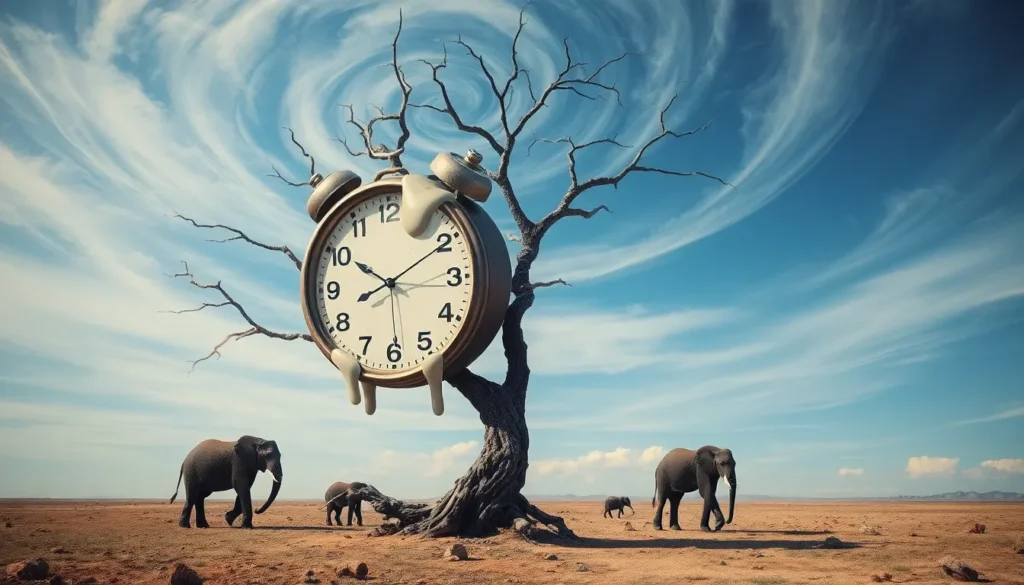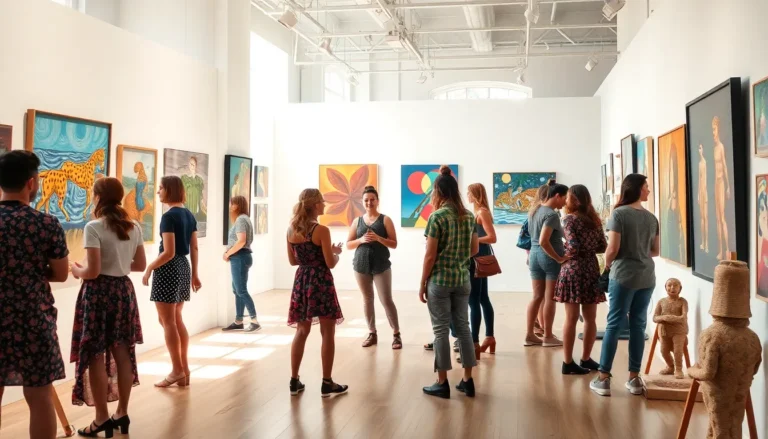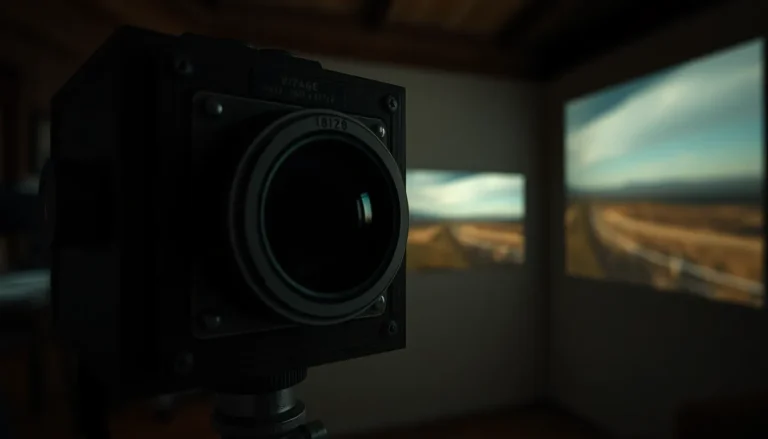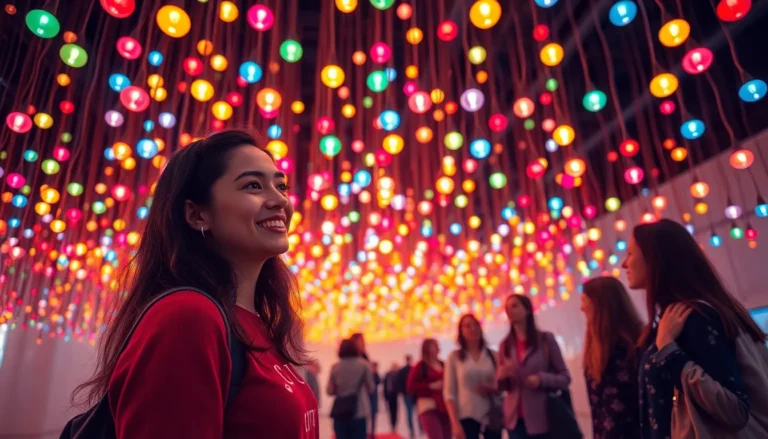Table of Contents
ToggleSurrealism painting invites viewers into a bizarre dreamscape where the ordinary twists into the extraordinary. Imagine a world where clocks melt like butter on a hot day and elephants prance on spindly legs. This art movement, born in the early 20th century, challenges perceptions and tickles the imagination, leaving audiences both puzzled and intrigued.
Overview of Surrealism Painting
Surrealism painting emerged in the early 20th century as a revolutionary art movement. Artists sought to unlock the unconscious mind, creating works that often defy logic. Notable creators like Salvador Dalí and René Magritte shaped this genre, using bizarre and dreamlike imagery in their pieces.
Imagery plays a crucial role in surrealism. Juxtaposition of incongruous elements evokes surprise and challenges traditional interpretations. For instance, Dalí’s melting clocks symbolize the fluidity of time. Similarly, Magritte’s vision, such as a bowler hat concealing a face, invites viewers to question reality.
Subject matter frequently explores fantasy and the subconscious. Paintings depict strange landscapes, distorted figures, and unexpected objects. These themes resonate with human emotions, offering insight into desires, fears, and dreams.
Techniques vary considerably within the movement. Some artists applied meticulous, realistic detail, enhancing the dreamlike quality. Others used abstraction, allowing free expression of thoughts. These diverse styles contribute to the richness of surrealism.
Surrealism also extends beyond painting, influencing literature, film, and photography. The movement’s impact on culture remains profoundly significant, inspiring numerous contemporary artists. Techniques and themes continue to resonate, making surrealism a vital part of art history.
In essence, surrealism painting evokes curiosity and contemplation. By merging the mundane with the extraordinary, it compels viewers to explore their imagination and confront their perceptions of reality.
Key Characteristics of Surrealism Painting
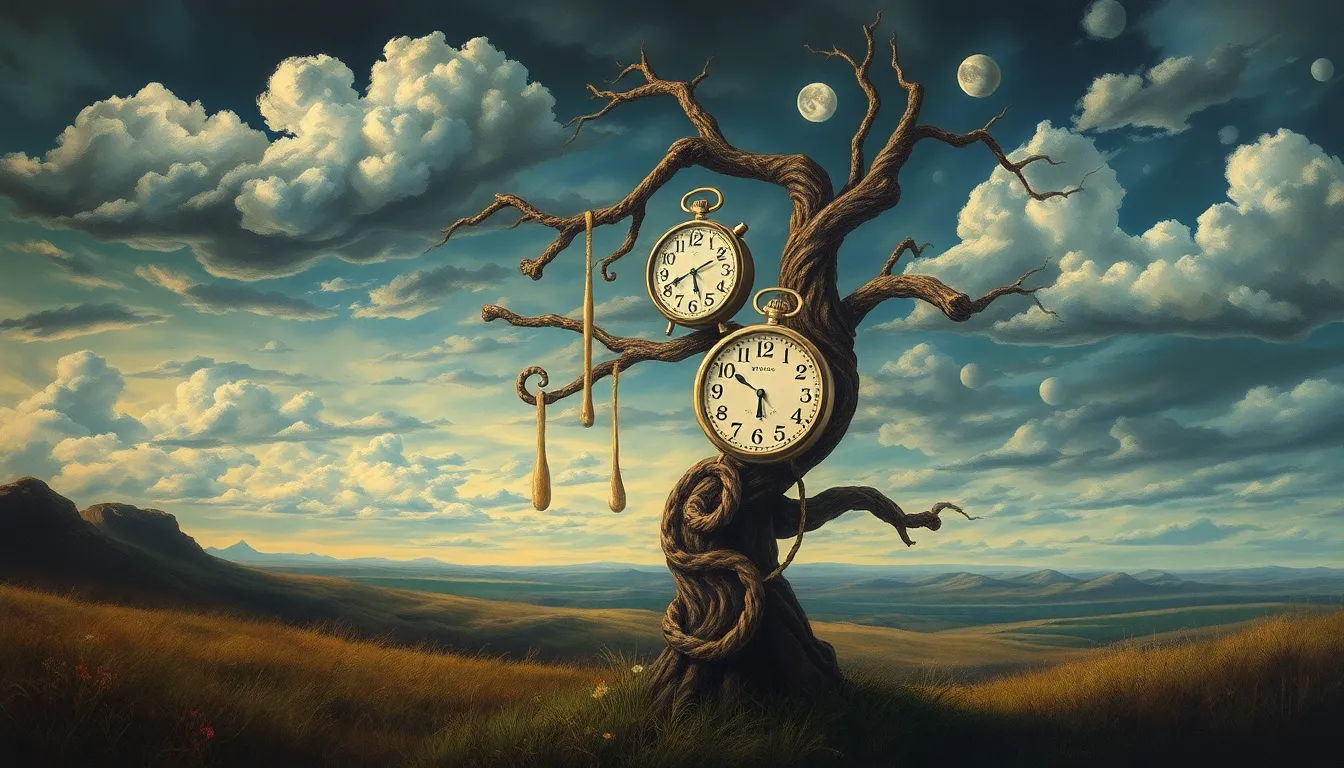
Surrealism painting showcases distinct characteristics that define its unique style. The movement emphasizes dreamlike elements, inviting viewers into a realm beyond ordinary perception.
Dream Imagery
Dream imagery forms a cornerstone of surrealist art. Artists represent subconscious thoughts, emotions, and imagery with striking visuals. Notable works often feature distorted figures and fantastical landscapes that evoke otherworldly sensations. Paintings evoke a sense of wonder, making the viewer question what is real. Artists like Salvador Dalí illustrate dreams with vivid detail, as seen in pieces that blend reality with imagination. Elements flow seamlessly, creating environments that seem both bizarre and familiar.
Unexpected Juxtapositions
Unexpected juxtapositions create a sense of intrigue in surrealism. Artists combine disparate elements, forming striking contrasts that stimulate the mind. These juxtapositions provoke thought and challenge conventional views. For instance, René Magritte’s art often features ordinary objects placed in unusual contexts. Clocks may appear melting next to serene landscapes, stirring a sense of surprise. By displacing familiar objects, surrealists invite viewers to engage deeply with the artwork. Such combinations challenge logic and encourage a fresh perspective on reality.
Prominent Surrealist Artists
Surrealism boasts several influential artists who shaped its landscape. Two of the most prominent figures include Salvador Dalí and René Magritte.
Salvador Dalí
Salvador Dalí stands as one of the most recognized surrealist artists. His paintings often depict striking dreamscapes filled with bizarre imagery. Notable works like “The Persistence of Memory” feature melting clocks that symbolize the fluidity of time. Dalí’s meticulous attention to detail establishes a paradox between reality and imagination. His eccentric personality and flamboyant style reflected his art. The unique incorporation of symbolism, such as ants and eggs, invites viewers to dive deeper into their subconscious. Dalí’s imaginative vision continues to resonate within modern art discussions.
René Magritte
René Magritte presents a distinctly different approach to surrealism. His work focuses on everyday objects placed in unfamiliar contexts, creating a sense of mystery. In “The Son of Man,” an apple obscures the subject’s face, challenging perceptions of identity. Magritte’s playful style encourages viewers to question reality and the nature of perception. Juxtaposing ordinary scenes with surreal elements creates captivating visual narratives. His exploration of language and imagery adds depth to his themes, often blending humor with philosophical inquiries. Magritte’s legacy endures, inspiring generations of artists and thinkers alike.
Evolution of Surrealism Painting
Surrealism painting evolved significantly throughout the 20th century, influenced by various cultural movements and individual artists.
Early Influences
Influences from Dadaism and Freudian psychology laid the groundwork for surrealism. Dadaism’s rejection of logic and reason inspired surrealists to explore irrationality and dream-like states. Sigmund Freud’s theories on the unconscious shaped the way artists approached their subjects, leading to the exploration of hidden desires and fears. Notable works from the early surrealists, such as Max Ernst’s and André Breton’s contributions, introduced collage techniques and automatic drawings, emphasizing spontaneity. Inspiration drawn from myth, dreams, and folklore further diversified surrealist expression, allowing artists to create evocative imagery.
Modern Interpretations
Modern interpretations of surrealism continue to engage artists today. Contemporary practitioners integrate technology, digital media, and installation art to expand traditional boundaries. Artists like Yayoi Kusama and Damien Hirst blend surrealist elements with modern themes, incorporating personal experiences and societal critiques. In addition, street art and digital platforms enable broader accessibility, allowing surrealism to evolve dynamically. New explorations in themes such as identity and cultural dislocation resonate with current audiences, ensuring the legacy of surrealism persists in contemporary dialogue. These reinterpretations invite viewers to reconsider the intersections between reality and imagination.
Impact of Surrealism Painting on Contemporary Art
Surrealism painting significantly influenced contemporary art, reshaping creative practices and perspectives. Artists today incorporate surrealist techniques, drawing inspiration from its characteristic dreamlike imagery and unexpected juxtapositions. Elements of the unconscious mind often serve as a foundation for new works, prompting artists to explore themes related to identity, perception, and emotion.
Modern artists like Yayoi Kusama utilize bold patterns and immersive environments, reflecting surrealism’s essence in contemporary formats. Damien Hirst’s pieces meld surrealist concepts with modern critiques, pushing boundaries of traditional art through provocative installations. Their approaches demonstrate the evolution of surrealism within a contemporary setting, merging the bizarre with current societal issues.
Surrealism’s impact extends to various mediums, including digital art and street art. Technological advancements allow artists to experiment with visual narratives, blending fantasy with reality in innovative ways. Accessibility increases as traditional surrealist elements integrate into digital platforms, engaging broader audiences and encouraging interaction.
Exhibitions worldwide feature modern artists inspired by surrealism, showcasing the movement’s enduring relevance. Artists don’t merely replicate techniques but transform and reinterpret them, creating fresh dialogues within the art community. The influence of surrealism is evident in the thematic exploration of the unconscious mind, a hallmark that continues to resonate with contemporary audiences.
Subsequently, the legacy of surrealism remains strong, illustrating its pivotal role in shaping artistic expressions. Contemporary art thrives on the imaginative possibilities originally presented by surrealist pioneers. Each new generation of artists embraces surrealism’s core tenets, ensuring its presence continues within the evolving landscape of visual arts.
Surrealism painting continues to captivate audiences with its unique blend of dreamlike imagery and thought-provoking juxtapositions. This art movement not only challenges perceptions but also invites viewers to explore the depths of their imagination. The legacy of surrealism thrives today as contemporary artists infuse modern themes and technologies into their work, ensuring its relevance in the ever-evolving art landscape. By pushing boundaries and provoking curiosity, surrealism remains a vital force in shaping artistic expression and understanding the complexities of human experience.

